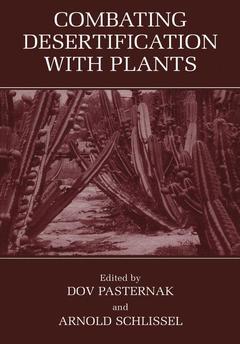The conference "Combating Desertification with Plants" was held in Beer Sheva, Israel, from November 2-5, 1999, and was attended by 70 participants from 30 countries and/or international organisations. Desertification - the degradation of soils in drylands - is a phenomenon occurring in scores of countries around the globe. The number of people (in semiarid regions) affected by the steady decline in the productivity of their lands is in the hundred millions. The measures required to halt and reverse the process of desertification fall into many categories - policy, institutional, sociological-anthropological, and technical. Although technical "solutions" are not currently in vogue, the conference organizers felt that perhaps the pendulum had swung too far in the direction of "participatory approaches." Hence IPALAC - The International Program for Arid Land Crops - whose function is to serve as a catalyst for optimizing the contribution of plant germplasm to sustainable development in desertification-prone regions - felt the time was opportune for providing a platform for projects where the "plant-driven" approach to development finds expression. Some 45 papers were delivered at the conference, falling into the categories of this volume: Overview, Potential Germplasm for Arid Lands, Introduction, Domestication and Dissemination of Arid Land Plants, Land Rehabilitation, and Mechanisms of Plant Transfer. The conference was funded by UNESCO (Division of Ecological Sciences), the Ministry of Foreign Affairs of Finland, and MASHAV, Israel's Center for International Development Cooperation.




